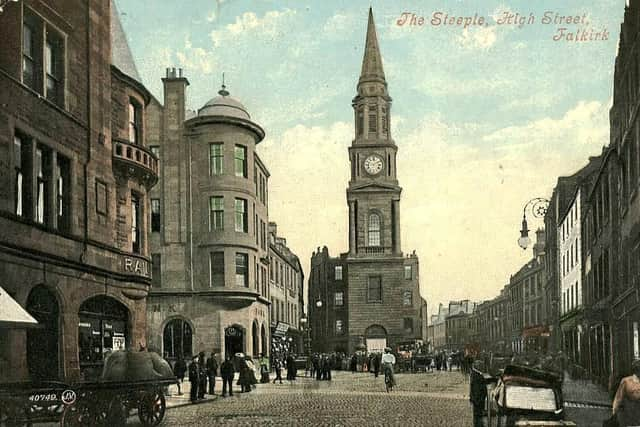Looking back with Ian Scott: The Cross of Falkirk
and live on Freeview channel 276
It was the thinking behind the redevelopment of the Steeple as a visitor centre, much delayed by Covid, but hopefully open in the coming Spring. One of the stories told in the centre concerns the open area in front of the steeple once known as ‘The Cross’ where all the important activities of the town took place.
When Falkirk became a Burgh of Barony in 1600 its official symbol, the Mercat Cross, was raised near the spot which is today marked by a circle and a cross in the cobbles. Here the market traders set up their stalls and important proclamations were made to the assembled public. The Cross Well is still there though sadly dry these days – another casualty of the ‘health and safety’. Back in the 17th century water from springs in Callendar estate was brought in wooden pipes to serve the needs of a growing population.
Advertisement
Hide AdAdvertisement
Hide AdNot far away was the official burgh weighing machine called a tron and a set of stocks where offenders were clamped at the ankles and made to face a barrage of rotten fruit from the angry inhabitants. It could have been worse. Some culprits were flogged through the streets to the parish boundary and kicked out. Others had their ear lobes nailed to a wooden pillar, or their noses split with a knife or had a hole burned in their cheeks with a red hot poker.


To ensure that they would be recognised if they ever came back to the town some serial offenders were branded on the shoulder with ‘my Lord’s burning iron of Callendar’. ‘Gossiping women’ who annoyed their husbands were often locked in a device called a ‘scold’s bridle’ or branx and chained to the wall of the steeple for a few hours or days.
The ultimate penalty was execution although it was used much more sparingly in Scotland than south of the border. In the 17th century the town gallows probably stood below the steeple and convicted offenders found guilty of murder, forging banknotes or coins, or interfering with the mail were executed in front of large crowds gathered to watch their departure from this life at a time when such spectacles were high entertainment. At a time when death was an ever present reality and Old Testament ideas of vengeance were still popular, public hangings did not cause the same revulsion we feel today.
The last man to face the hangman in the streets of the town was 18 year old Francis Cockburn who murdered William Burt, a fellow Camelon nailer, in September 1827. He was executed below the steeple on May 8 the following year after having spent an hour in ‘devotional service and prayer’ in the company of two Ministers. After declaring that “it was bad company that brought me to this” he ascended the steps and was launched into eternity. His body was taken to Dr Munro in Edinburgh to be ‘anatomised’ as the Sheriff had ordered.
Advertisement
Hide AdAdvertisement
Hide AdBy the middle of the 19th century the market stalls had moved to ‘New Market Street’ but the Cross remained the centre of the town for all important events and activities, much as it was when I was young. Let’s hope it can be again.